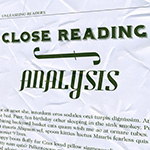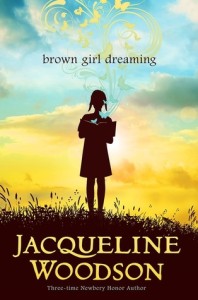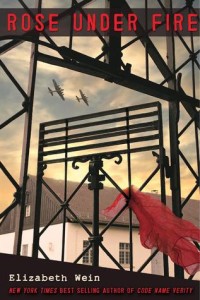
Freedom Summer
Author: Deborah Wiles; Illustrator: Jerome Lagarrigue
Published: January 1, 2005 by Aladdin
Summary:
John Henry swims better than anyone I know.
He crawls like a catfish,
blows bubbles like a swamp monster,
but he doesn’t swim in the town pool with me.
He’s not allowed.
Joe and John Henry are a lot alike. They both like shooting marbles, they both want to be firemen, and they both love to swim. But there’s one important way they’re different: Joe is white and John Henry is black, and in the South in 1964, that means John Henry isn’t allowed to do everything his best friend is. Then a law is passed that forbids segregation and opens the town pool to everyone. Joe and John Henry are so excited they race each other there…only to discover that it takes more than a new law to change people’s hearts.
Review: I rarely review picture books or texts that weren’t published recently. For me, the blog is a place for me to highlight newer books (whenever possible). I love picture books, but Kellee often reviews them, and I love young adult literature, so those are often the titles I review. After I read this book, I couldn’t wait to blog about it because it is easily one of the best picture books I have ever read and is worthy of the praise it receives. Set in the 1960s South, this moving, lyrical text depicts the Civil Rights Movement through the eyes of a child who just wants to adventure with his friend. The messages are powerful, and I plan to purchase it to read again and again with my son. After we read this as a family, my husband and I wondered if it was a work of nonfiction because it felt so very real to us.
You can view Kellee’s review of Freedom Summer here.
Teachers’ Tools for Navigation: The most obvious choice would be to use this text to teach about diversity, discrimination or the Civil Rights Movement. I would also love to pair this with The Other Side by Jacqueline Woodson. Students would find great value in comparing and contrasting the imagery and messages of these two texts. I could also see it being paired with texts like To Kill a Mockingbird by Harper Lee. More than anything, this is a book about the power of friendship.
Discussion Questions: How do these boys view their world differently from the adults around them?; Why might the author have chosen to end the text the way she does? What message does it send?; How do the illustrations support the readers’ understanding of the text?
We Flagged:
“John Henry’s skin is the color of
browned butter.
He smells like pine needles after a
good rain.
My skin is the color of the pale
moths that dance around the porch
light at night.
John Henry says I smell like a just-washed sock.
‘This means war!’ I shout.”
Read This If You Loved: The Other Side by Jacqueline Woodson, Something Beautiful by Sharon Dennis Wyeth, Goin’ Someplace Special by Patricia C. McKissack
Recommended For:









